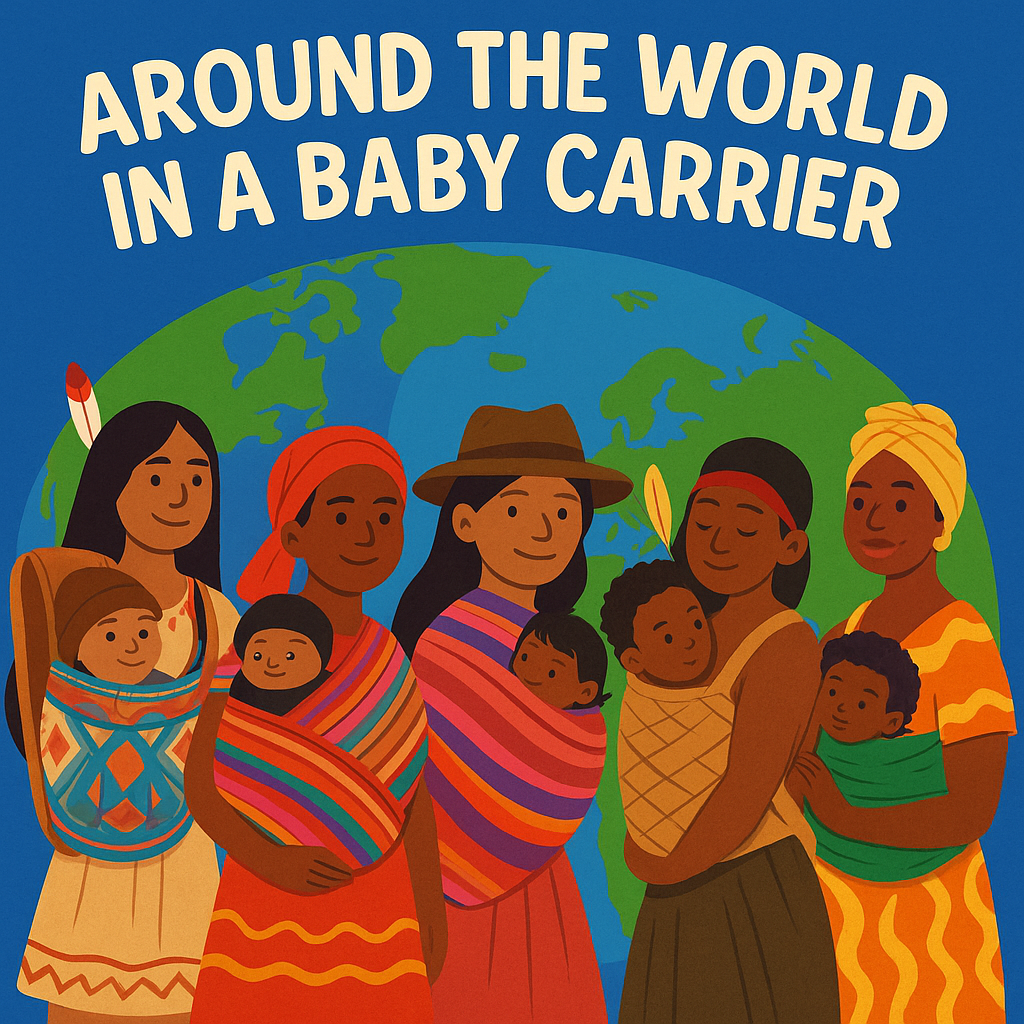
Around The World In A Baby Carrier

Complete References & Further Reading
This page gathers all the sources, articles, photographs, archival materials, and books that have informed and enriched our exploration of traditional babywearing and cradle traditions around the world. Each reference has been chosen with care to honour the communities who continue to carry their children in ways that reflect deep cultural knowledge, connection, and love.
By sharing these references, I invite you to look deeper, follow the threads of history and contemporary practice, and celebrate the incredible diversity of ways families keep their babies close. May this list support your own learning, spark curiosity, and serve as a respectful acknowledgment of the people and cultures who have shared their stories with us.

Closing Reflection: Holding the World Close
As we arrive at the end of this journey around the world in a baby carrier, one truth becomes clear: to carry a baby is to carry more than a small, soft body. It is to carry stories, songs, prayers, and the quiet strength of generations.
In every knot tied and every cloth wrapped, we find evidence of deep care and cultural wisdom. We see families adapting to mountains and deserts, weaving meaning into patterns, and finding ways to keep little ones close even in the hardest of times.

Voices
This page brings together the stories, reflections, and lived experiences of the people behind the carriers — parents, grandparents, artisans, educators, and community keepers from around the world. These profiles highlight the diverse voices who have shared their knowledge and traditions, and who continue to carry their babies in ways that strengthen bonds and honour cultural identity.
By amplifying these voices, we not only celebrate the beauty and skill in traditional carrying practices, but also recognise the resilience and wisdom that has been passed through generations. May these stories inspire you, deepen your understanding, and remind us all of the shared humanity in holding our little ones close.
This section is dynamic, growing and evolving as Voices join the conversation. You are invited to share your Voice, your story of carrying babies in your culture, community or family.
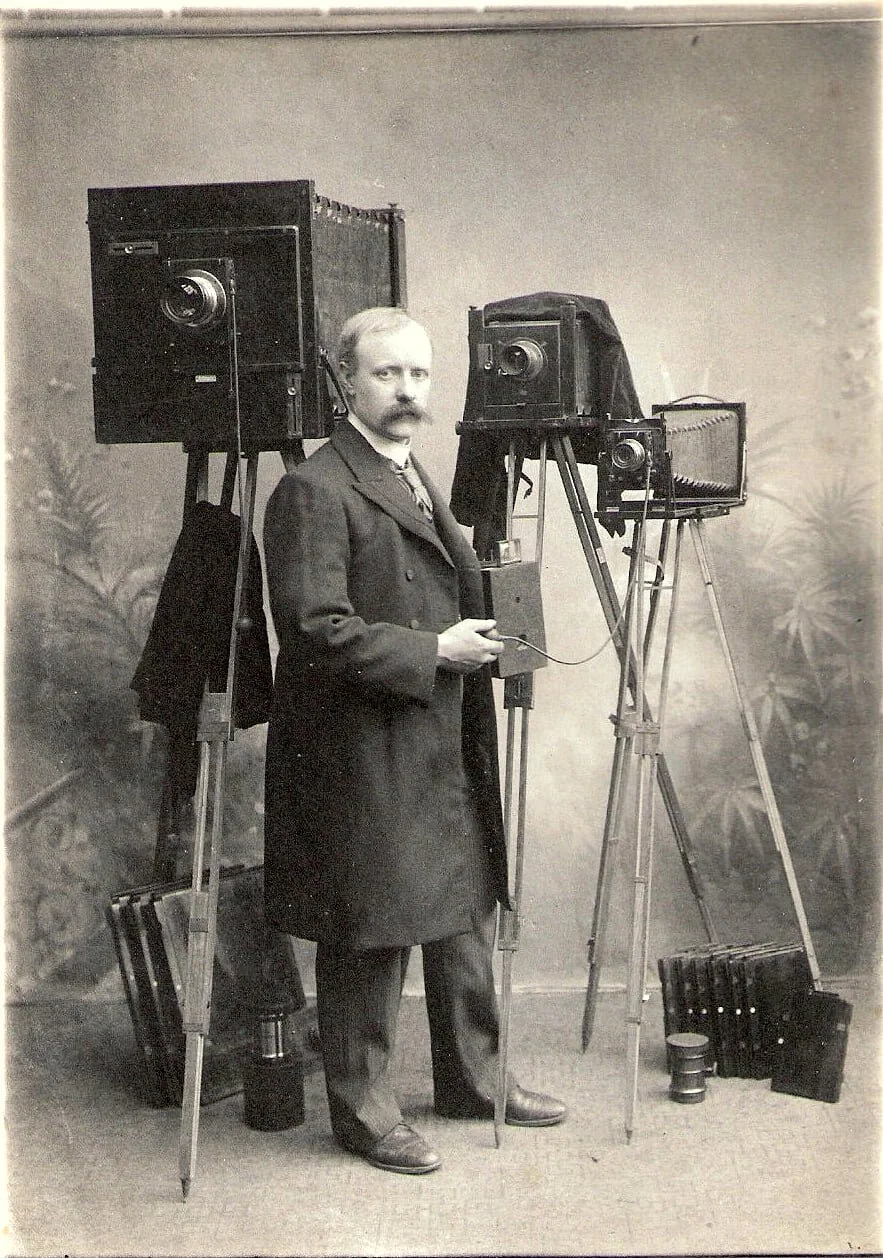
Witness and Legacy: The Photographers Who Traveled the World to Document Traditional Cultures
In the late 19th and early 20th centuries, the world was changing at a breathtaking pace. Empires expanded, railways carved through forests and plains, and new technologies — like photography — allowed people to see distant lands and cultures for the first time. In this moment of intense curiosity and colonial expansion, a generation of photographers set out to "document" Indigenous and traditional peoples around the world.
Armed with bulky cameras and heavy glass plates, these photographers traveled by ship, horse, camel, canoe, and on foot to some of the most remote corners of the earth. They captured images of Sámi reindeer herders in Scandinavia, Ainu families in Japan, Himba mothers in Namibia, Dyak communities in Borneo, Mapuche families in Chile, and countless other groups from every inhabited continent.
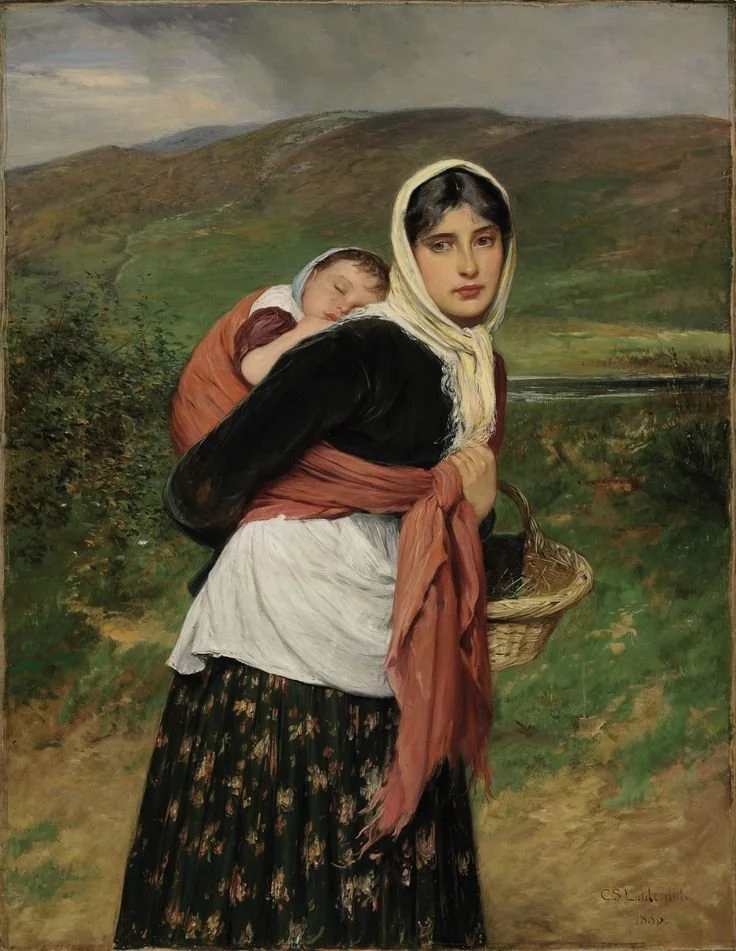
Beyond the Record: Babywearing, Women's Work, and the Silent Threads of History
When we walk through museums or turn the pages of history books, we encounter images of rulers, warriors, and towering monuments — but rarely do we see the quiet, tender work that sustained humanity: the work of caregiving. Among the most overlooked of these practices is babywearing, a tradition so ordinary and essential that it has often slipped through the cracks of recorded history.
Part of this invisibility lies in the nature of the materials. Carriers have always been crafted from organic, perishable resources — woven cloth, animal hides, plant fibers, leather — which rarely survive the centuries. And when history was written, it was often penned by men in patriarchal societies, who saw domestic and caregiving work as unworthy of record. Thus, the act of carrying babies close, so vital and universal, was left out of scrolls and stone.
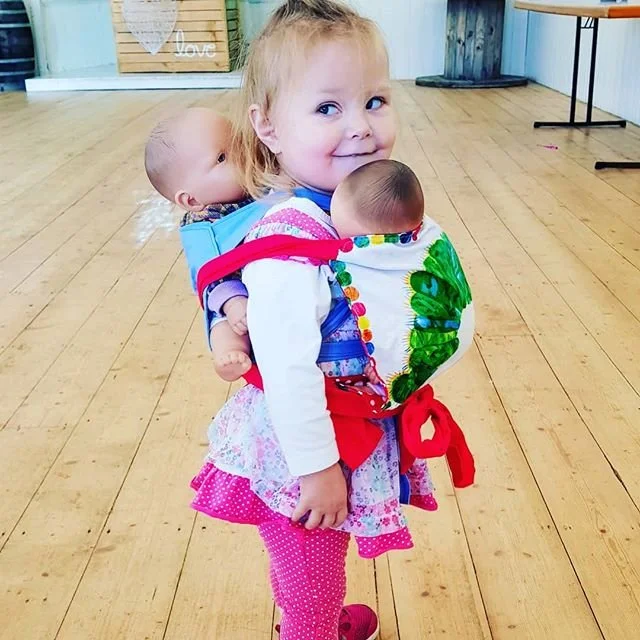
The Future of Babywearing: Bridging Ancient Wisdom and Modern Parenting
As we look ahead, babywearing continues to be more than a parenting tool — it is a living bridge between the past and the future. In a world moving ever faster, the act of holding a baby close offers a gentle resistance to disconnection. It invites us to slow down, listen deeply, and root ourselves in the rhythms of human touch and presence.
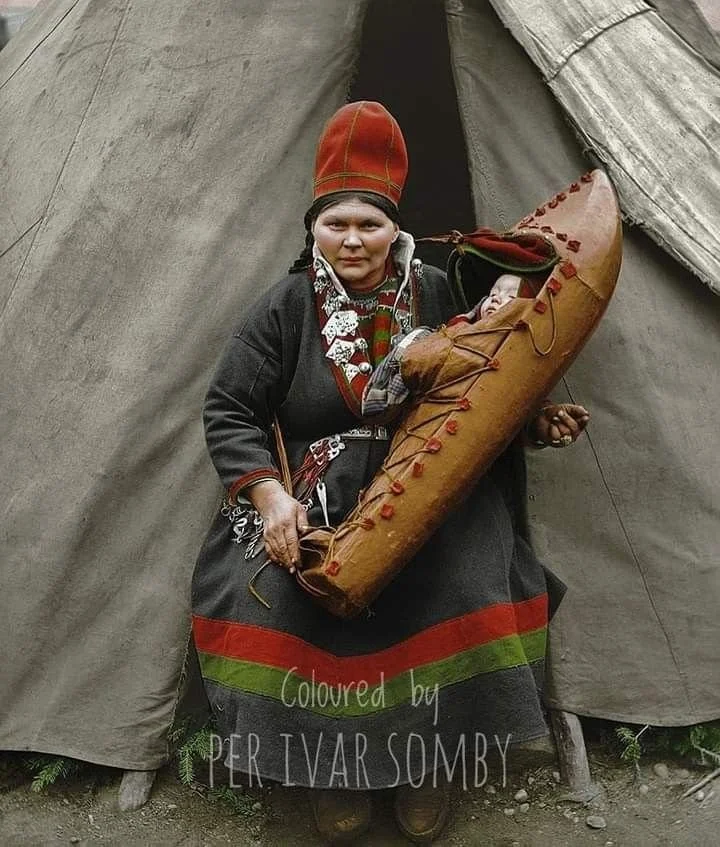
Arctic: Northern Lights, Soft Skins, and Silent Strength
Across the circumpolar north — from Sámi lands in northern Europe to the coastal Inuit communities of Greenland and Alaska, and the vast tundras of Siberia — babywearing practices have been shaped by cold, movement, and deep connection to land and animals.
These carriers, whether fur-lined komse cradles, moss bag wraps, or amauti parkas, reflect a shared need to protect babies from harsh climates while keeping them close to the warmth and heartbeat of their caregivers. While each community’s designs and materials differ, all carry the same spirit: love, survival, and continuity.
In these regions, babywearing is not just a practical necessity — it is an intimate, embodied relationship between caregiver and child, woven through the rhythms of daily life on snow-covered trails, reindeer herding camps, and icy coastal hunting grounds. Babies are held within soft skins and furs, their faces protected from biting winds, yet able to watch, listen, and learn from the world around them.
Each stitch and wrapping technique reflects generations of adaptation, resilience, and care. These carriers are more than tools; they are living expressions of cultural knowledge and silent strength, shimmering quietly beneath the northern lights.

Mediterranean Europe: Olive Groves and Sunlit Cloth
In the warm, sun-soaked regions of Mediterranean Europe — from Greece and Italy to Spain and the coastal villages of the Adriatic — babywearing traditions reflect a life lived in close connection with family, land, and the rhythms of the seasons.

Modern Designs, Safety, and Respecting Traditions
As babywearing continues to evolve and grow in popularity, new carrier designs have emerged to meet the needs of modern families. Many of these designs beautifully honor traditional carriers, incorporating elements that have been refined over generations. Others, however, are purely modern inventions, created without roots in any cultural carrying practice — and not always with a full understanding of infant physiology and safety.
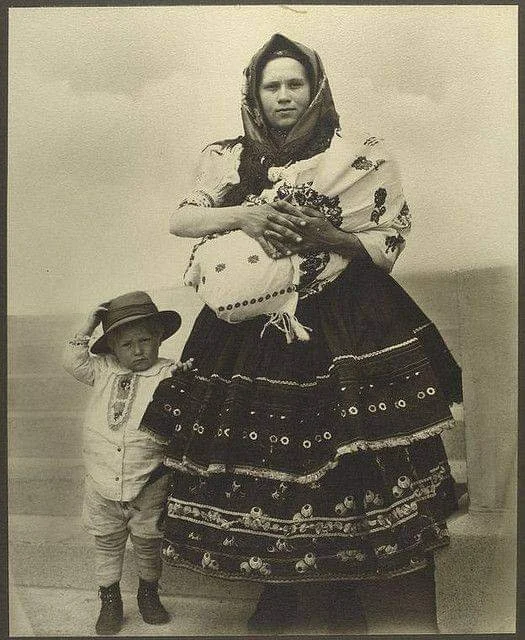
Nordic (Northern) Europe: Wool, Wind, and Ancestral Ties
In the vast, windswept landscapes of Northern Europe — including Norway, Sweden, Finland, Denmark, and the Sámi regions — babywearing traditions are deeply intertwined with the rhythms of snow, forest, and northern light. Here, carrying a baby has always been a way to keep them safe and warm, but also to teach them from the very start that they are part of a larger natural and cultural tapestry.
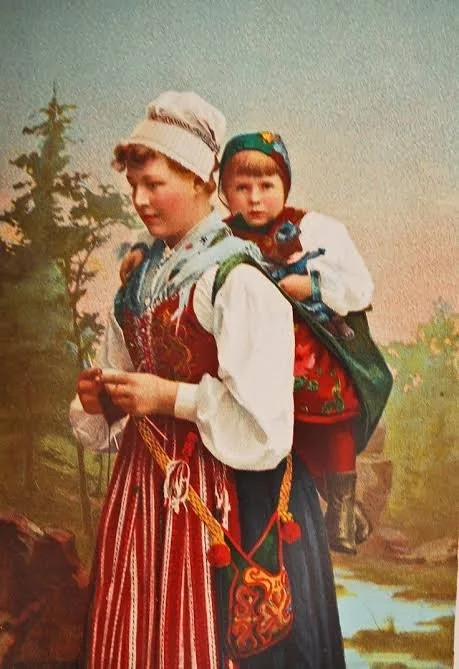
Central & Western Europe: Alpine Wraps and Farmstead Rhythms
In the heart of Central and Western Europe — from the Swiss and Austrian Alps to the rural plains of Germany, France, and beyond — babywearing traditions reflect a life deeply rooted in farming, communal work, and close family bonds.
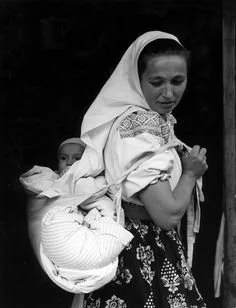
Eastern Europe & the Balkans: Fields, Festivals, and Folk Motifs
In Eastern Europe and the Balkans, babywearing traditions echo the region’s rich tapestry of folk songs, seasonal festivals, and communal farming life. From the rolling plains of Hungary to the mountain villages of Romania, Bulgaria, and the former Yugoslav countries, carrying a baby has always meant more than simple transport — it is an act of love, continuity, and cultural pride.
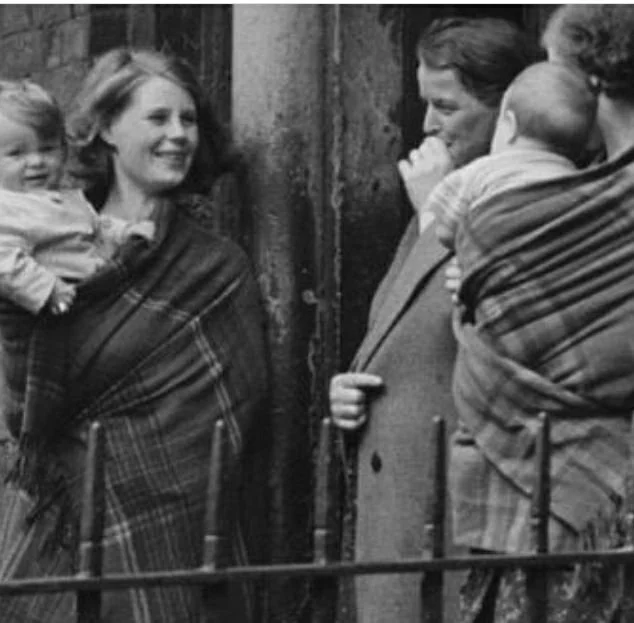
British Isles: Shawls, Songs, and Silent Threads
In the misty landscapes of Ireland, Scotland, Wales, and the broader British Isles, babywearing traditions echo ancient rhythms of hearth and field. Though often overshadowed by later industrial shifts, these practices reflect deep ties to family, land, and shared community life.
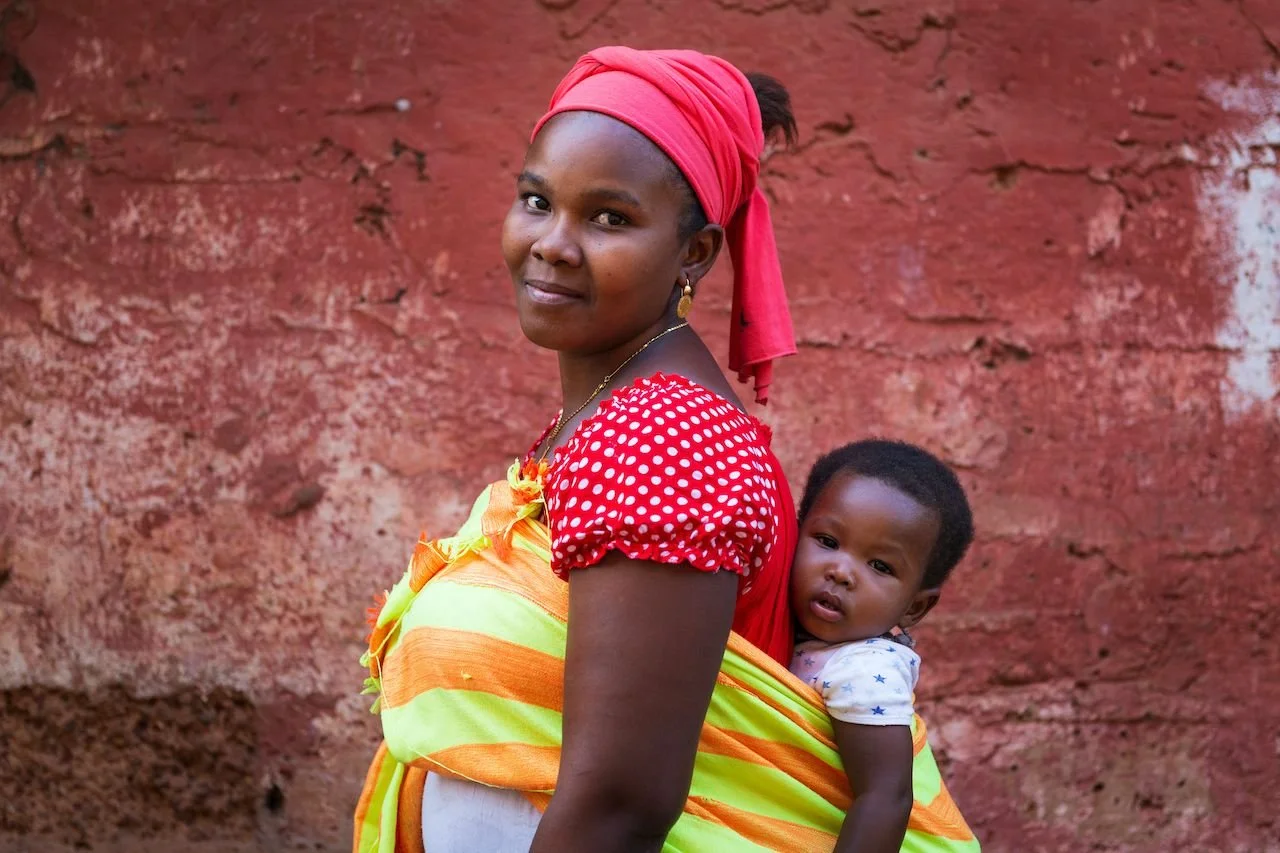
Caribbean: Where Are the Carriers?
Across the Caribbean islands — from Jamaica to Haiti, the Dominican Republic to Trinidad and Tobago — babywearing is much more than a practical way to carry a child. It is a living expression of community strength, ancestral memory, and the vibrant rhythms of island life.
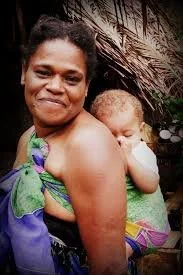
Polynesian, Micronesian, and Melanesian Communities: Carried in Rhythm, Rooted in Kinship
Across the islands of the Pacific, family life has always been rich with song, story, and close connection. Babies are carried, of course — in arms, on hips, and always within reach of aunties, siblings, cousins, and community. But when we searched for images of traditional baby carriers from across Polynesia, Micronesia, and Melanesia (outside of Papua New Guinea), we were met with near-silence.
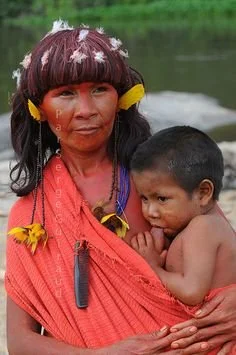
The Amazon: Forest Cradles and River Songs
In the lush, endless green of the Amazon rainforest, babywearing practices echo the rhythms of flowing rivers and whispering leaves. Among the many Indigenous peoples of the Amazon — including the Yanomami, Tikuna, Kayapo, Shipibo, and countless others — carrying a baby is an intimate act of connection, rooted in both practicality and deep cultural belonging.
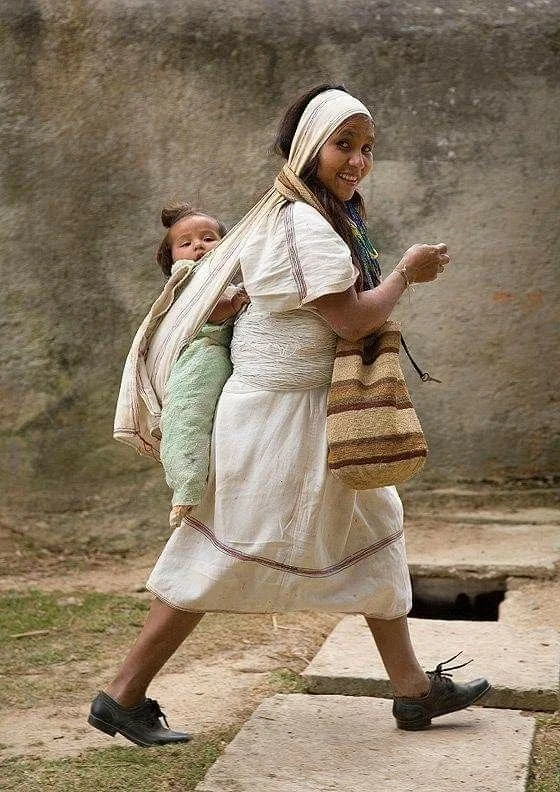
Between Andes and Amazon: Carriers of the Lowlands and Coasts
Tucked between the towering peaks of the Andes and the deep green mysteries of the Amazon basin lie the valleys, foothills, and coastal plains of western South America. Here, Indigenous families have long carried their babies close in simple woven cloths, often brightly coloured and richly patterned, reflecting centuries of cultural exchange and adaptation. These carriers are practical tools for daily work in fields and markets and also an extension of the landscape itself — bridging mountains, rivers, and sea.
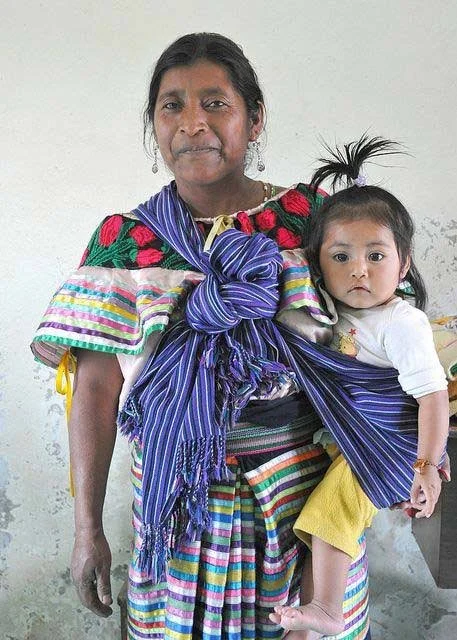
Mesoamerica: Rebozos, Tzutes, and Living Weaves
In Central America, babywearing practices are inseparable from the region’s rich weaving traditions, communal life, and enduring resistance to cultural erasure. Among Maya, Zapotec, Mixtec, and other Indigenous peoples in present-day Mexico, Guatemala, and beyond, carrying a baby is an act of love, identity, and resilience.
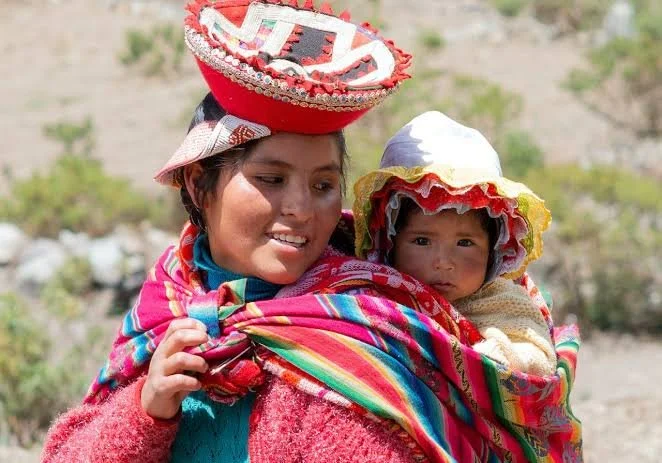
The Andes: Mantles, Mountains, and Woven Bonds
In the towering heights of the Andes, babywearing traditions are as vibrant and strong as the mountains themselves. Among Indigenous communities such as the Quechua, Aymara, and Kichwa in Peru, Bolivia, Ecuador, northern Chile, and Argentina, carrying a baby is an act deeply tied to land, ancestry, and textile artistry.
A Note on the Order of This Journey
This series follows a gentle, story-driven path around the world, inspired by the spirit of exploration rather than order or importance. Each culture and carrying tradition is equally honored and valued. The sequence chosen is meant to reflect a narrative flow — weaving together our shared humanity — not a ranking or historical timeline. Thank you for joining this journey with an open heart.
Want to follow the whole series?
A new post will go live every day from August 1 to September 11.
Subscribe via RSS to get each one automatically — no need to check back or rely on social media.
👉 https://www.southernnaturalparentingnetwork.org/around-the-world?format=rss
You can use a free app like Feedly to subscribe to this blog and get each new post from Around the World in a Baby Carrier automatically.
